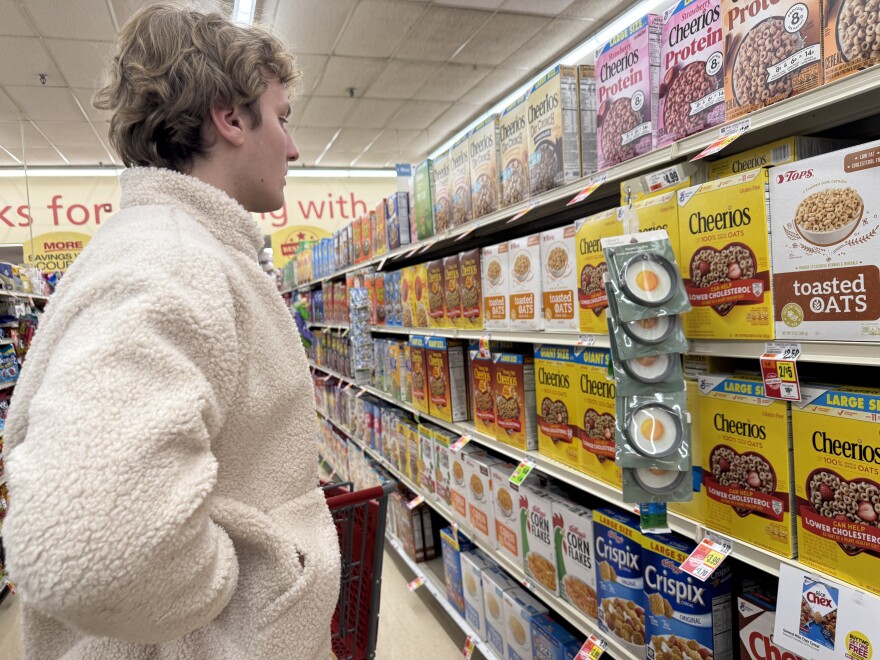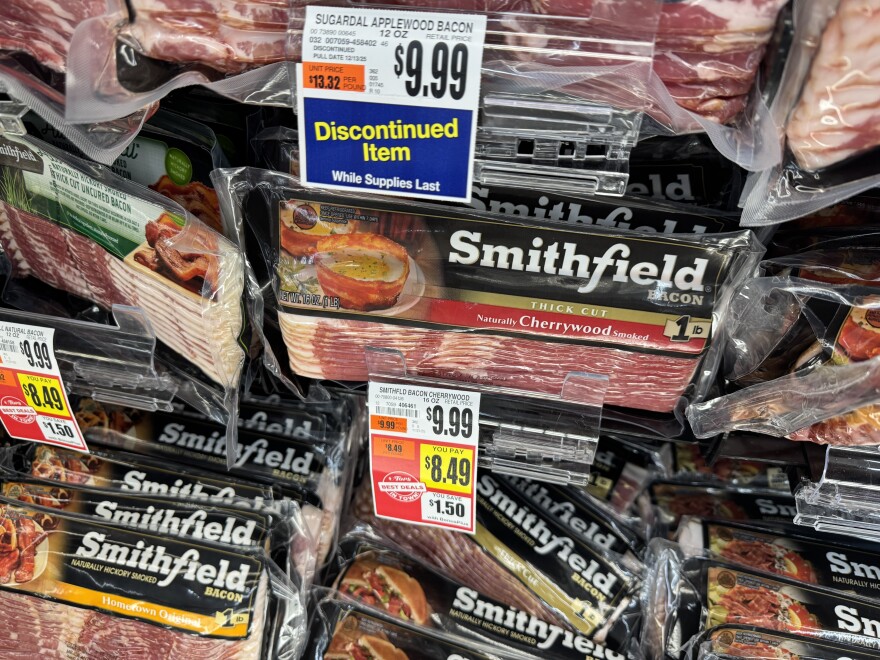Every year, the American Farm Bureau Federation releases the “Thanksgiving Dinner Survey.” The informal survey has been running for 40 years, and serves as a consistent, if anecdotal, snapshot of the American economy for the average consumer. Using the same 10 ingredients since 1985, the survey is about as airtight as a year over year price comparison can get.
This year, the survey shows the cost of Thanksgiving dinner has been falling steadily in the last few years, and the cost in New York is 20% higher than the national average.
This year, that average price is $55.18, down from $58.08 the year before and $61.17 the year before that. Yet New York hovers at $66.06 for this year, highlighting the crippling affordability crisis in the state that has food banks working overtime.
But the crisis isn’t just in New York, it’s a national affordability crisis, yet the national numbers appear to be a small light of hope. While prices have dropped around the nation, they remain high in New York state.

To understand why, it helps to look at the numbers individually. For starters, the cost of produce has risen dramatically; three pounds of sweet potatoes will set you back $4.00, up 37% from last year. A pound of carrots and celery is $1.36, up 61% from last year.
“Fruits and vegetables are highly dependent on manual labor,” explained Amanda Powers, Communications Director for the New York Farm Bureau (AFBF). “We have other factors now like high labor costs, combined with a shortage of labor. And when that happens, which has been going on for some time now, that's what makes your produce costs go up.”
She insists farmers are “price takers, not price makers.” In other words, farmers are not the power brokers in the American food system. For instance, this year American growers took a hit, losing 15,000 farms. According to AFBF president Zippy Duvall it came from a combination of factors, “including historically low crop prices, high supply costs, and trade uncertainty.” All the upheaval has nudged up prices.
Powers said mother nature takes her fair tax as well, “I mean, there's weather involved. We've had hurricanes down in North Carolina, which is one of the main growers of sweet potatoes.”
One item driving Thanksgiving prices through the roof are dinner rolls, frozen peas and pie crust, all are 24% more expensive than the national average. Each item is affected by grain prices, and farm labor shortages, in part because of crackdowns on undocumented immigrant labor.
“You have a labor force that is largely immigrants. In many cases, those are undocumented immigrants,” said Laura-Anne Minkoff-Zern, director of food studies at Syracuse University. “People are less likely to come across the border, so you don't have the same population of incoming immigrants.”

This year, the drop in Thanksgiving dinner costs comes largely from the turkey itself. Having anticipated another avian flu outbreak, purveyors packed their storage freezers with the fowl.
“A lot of the turkeys that people buy and eat are frozen already. So that's why prices haven't gone up dramatically,” Penfield explained that grocery stores buy their turkeys a year in advance and leave them in arctic storage. Avian flu can’t touch prices when the bird in question is in a freezer.
Much like poultry, the eggs they yield have their season, too, Penfield noted. As Avian flu returns, he warned, “You’ll start seeing egg prices go up and they will go up all throughout the winter.”
But the laws of supply and demand betray the traditional turkey in another way. People don’t really like turkey. Industry insiders admit it’s hard to find an American family that buys a whole turkey more than twice a year, and grocery stores know this.
“The demand is just not as great for turkey as it once was.” Powers explains, “Some people don't do a turkey at all for Thanksgiving anymore. So that presses the price down even further.”
The lack of demand and abundance of storage has dropped the turkey’s price by 16% on average nationwide this year, but in New York, that same bird is 31.6% more expensive.
“It's taxes and regulations. That's usually the two drivers, especially in New York,” Syracuse University economist Patrick Penfield explained, “Taxes and regulations, kind of stifle your ability to lower prices just because you got all these increased costs. So, you have to make it up someplace.”
At one nationwide chain, Thanksgiving dinner dropped by 25%. Penfield explained that “Walmart isn't comparing apples to apples from last year. They more or less changed what's going into that Thanksgiving meal that they're selling to people.”
Business calls it the “loss leader” tactic, essentially highly publicizing a good deal or major item designed to get customers in the store.
“Walmart's expectation is you're going to buy all this other stuff. You're going to buy laundry detergent, peanut butter, jelly, and milk. And that's how they're going to make their money.”

This week, New York shoppers who want to buy the next day’s meal for breakfast will find biscuits, eggs, and pancake fixings are up an average 25%, while bacon has skyrocketed as much as 60% depending on the brand. Penfield said that price hike is set by a conglomeration of four to five meat producers.
“And that's part of capitalism, when you have these oligopolies,” he explained. “Nobody really talks about it, but that's what's really happening.”
For now, coffee and canned goods are stable, but he warned those, too, will go up by the end of the year as tariffs kick in at the beginning of 2026.



